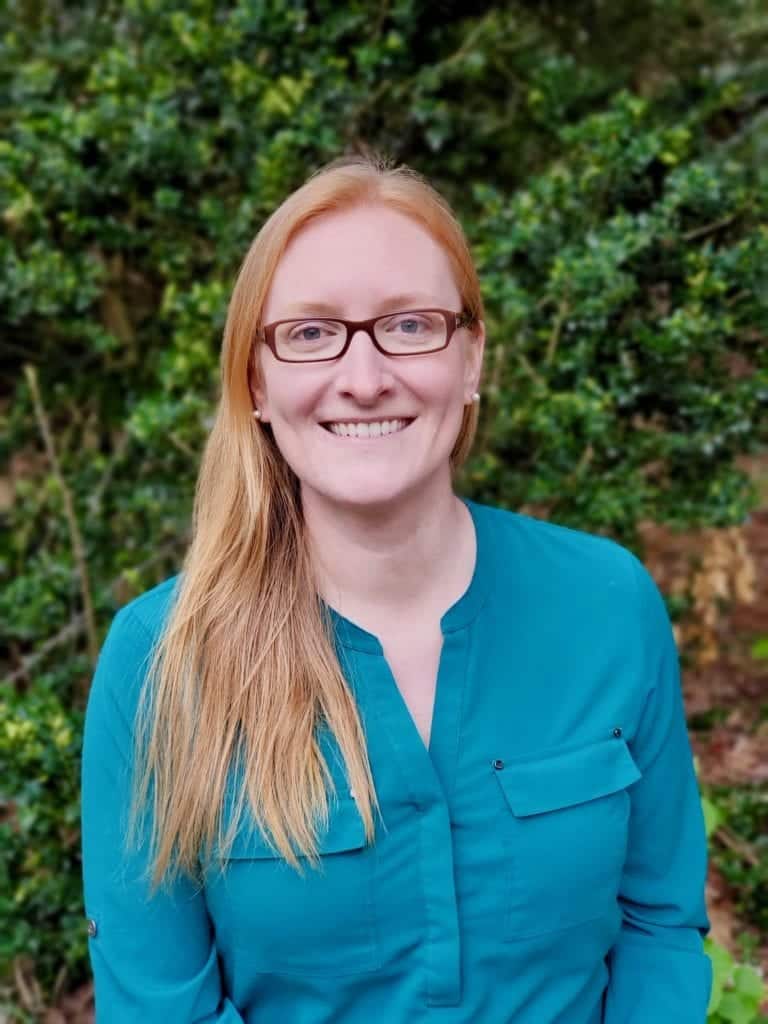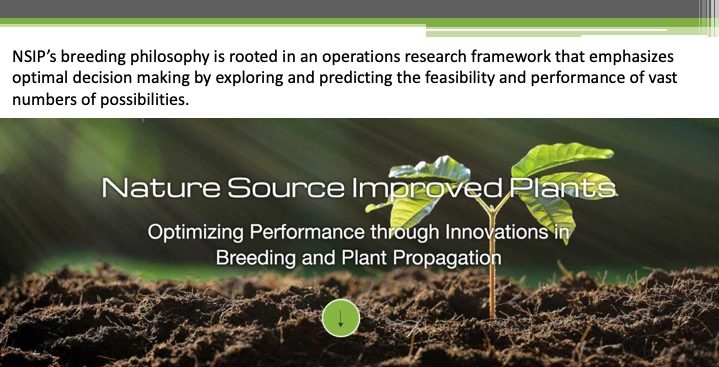Liana Nice is the director of breeding sciences at NSIP
When I was in college I lived in a big house and shared meals with 18 other people. Two of us were responsible for buying ingredients and planning the menus. At the end of each week, we would look through the fridge to see what food was left and then try to find recipes that would use up the remaining ingredients. To help us make those decisions, we used a website that found recipes based on what you had in your house.
The website used an algorithm that searched many recipes for those that matched our ingredients and then provided a more manageable set of options to choose from. We could even adjust the settings to show us the best recipes if we added a few ingredients or if we restricted them based on our house-mate’s dietary restrictions.
Many years later, at Nature Science Improved Plants (NSIP), I now think about plant breeding in a similar way. How can we take the raw ingredients of plant germplasm and combine them in an efficient breeding scheme to create new crop varieties with all the desired traits?
Like with deciding what’s for dinner, breeders are faced with so many possibilities that it can be difficult to make the best possible decisions without support of the new computational tools coming from math and engineering – including the emergent field of operations research.

NSIP develops technologies and algorithms that help crop science companies to get more out what exists now and to identify opportunities for improvement based on what doesn’t yet exist. It’s not just matching a product profile – it’s profiling millions of potential products to create new varieties that provide step-change in yield, or other breeding goals.
The Process
Companies come to NSIP with a market need. Some clients have many years of data from established breeding programs, and others have very minimal data from newly established breeding programs. In either case, we take this information and bring it together to build optimization models that find the best possible options for producing high quality breeding products in the most efficient manner.
The first step? Define design specifications.
Building design specifications is a process that translates breeding problems into a formal set of objectives and constraints. After going through this process, the objective can be solved using NSIP’s optimization algorithms that identify optimal solutions using available breeding data.

There’s a translation piece to this that’s really important, and that’s where I come in as NSIP’s Director of Breeding Sciences. As our clients create their design specifications, we put it in the context of available data and breeding goals. What are the market demands, what are emerging diseases, and what are the priorities of tomorrow’s crop?
We put it all together to create superior products and options for the clients. It breaks down into a simple tradeoff analysis where breeders view all the possibilities:
- Feasibility/Non-feasibility – can we create a product that meets all specifications?
- Optimality/Non optimality – given the parameters a client has provided what’s the optimal genetic outcome? Is that always the best choice?
With breeding, we must consider that we might not always get everything we’re looking for in terms of the trait combinations. There’s randomness and uncertainty in the process. Our analytics enable our clients to invest their resources in the directions that are most likely to result in success.
Breeding for the Future
We advise our clients that the first thing they need to do before we develop design specs is to reach out to their marketing department. What can they sell that is value added? What does the consumer want?
The needs of the global market are rarely singular or static. Each country and region may have different priorities, so we work with our clients to tailor design specifications for each priority region.
In addition, the challenges of today might not be the same challenges five- to 10-years from now. We help clients look to the future by reviewing the breeding options and by addressing these questions:
- What is possible now?
- What’s possible in the future?
- How do we address risk and uncertainty through breeding?
- Which of the optimal solutions meet the current and future needs of the product pipeline?
- How do we manage breeding for multiple traits simultaneously?
- How do we tailor technologies to the practical consideration of specific crops?
Addressing these questions helps narrow down the list of millions of possibilities, to the most valuable. Breeding is complex – it involves not only finding the right traits, but also accounting for environment and market changes. NSIP’s algorithms allow breeders to pivot to address changing concerns.
For more information about how you can optimize your breeding approaches, check out nsiplants.com or email info@nsiplants.com.












